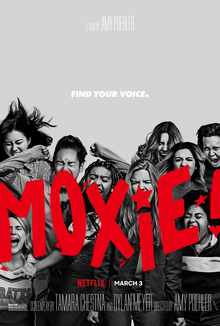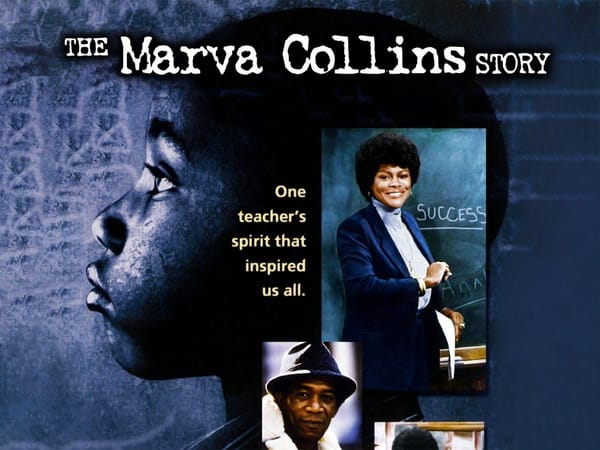Moxie ★★★★☆
Film contributor Eva Borras takes a look at the latest Netflix original feature 'Moxie': a story of high schoolers rebelling against attitudes in their school that have gone unchallenged for too long—directed and starring Amy Poehler.

The second movie directed by Amy Poehler Moxie was released on Netflix on 3rd March. Telling the story of Vivian (Hadley Robinson) during her high school experience, this coming of age movie takes a turn when Vivian, the main character, realises how toxic and derogatory her education environment is towards women. She therefore decides to change the way girls are treated and viewed in her school by following the steps her mother took when she was a teenager.
Based on the story written by Jennifer Mathieu, Poehler carefully directs a feature capturing the reality of most girl high schoolers both in the USA and globally. Moxie begins at the start of an academic year and as the audience we witness how Lucy (Alycia Pascual-Peña), one of the new students, gets continuously harassed by the popular sport player Mitchell (Patrick Schwarzenegger) . After several efforts to complain and report this behaviour to the principal, Lucy gets given as an excuse ‘boys will be boys’ and there is no consequences to his actions. Despite being told to ‘keep her head low’ until the bully finds someone else to bother, Lucy decides to not give in and by doing so, she inspires Vivian to anonymously start a magazine calling out the sexist behaviours at school. This leads to a group of girls uniting and creating a safe space to confess their struggles and, as they put it, ‘smash the patriarchy’.
this movie can change the way girls react to bullying and sexism by inspiring them to speak up and look out for each other
From my point of view, this movie can change the way girls react to bullying and sexism by inspiring them to speak up and look out for each other like the Moxie group. Similarly, what I particularly enjoyed was the progress and growth of each character as they realise how wrong some of the rules are, like the strict dress code, or the fact that the football team of boys objectify women based on their physical appearance by creating a ranking of all the girls in the school. As the movie progresses it is notable how Claudia, Vivian’s best friend, goes from being quiet and obedient, to taking the blame for acts she didn’t do in order to protect her friend. The movie highlights that each person rebels and reacts to trouble in a different way and there should be no judgement or competition.
It could also be said that the most precious relationship is the mother-daughter connection between Vivian and Lisa (Amy Poehler). Scenes with Lisa and Vivian are scarce, but I felt some of the realest moments in the film were between both of them. When Lisa unconsciously inspires her daughter to follow in her footsteps and speak up, if it wasn’t for the old albums of Lisa’s youth, Vivian would have not created the magazine. From my opinion, how your parents or carers can influence your upbringing and views in the world is a crucial message of this film, which even made me tear up at times.
On the other hand, some aspects of this story felt a bit odd. For instance, the mother mentions that when she was a teenager her brand of feminism wasn’t intersectional enough, but I felt Vivian doesn’t fulfil this either. At times it felt as if the sole purpose of having Lucy and the rest of the powerful POC girls was to teach Vivian about feminism but get no reward or credit for it, as the spotlight is only shined to Vivian. Likewise, at times Moxie can lose a sense of reality as it moves really fast, but I must say you will probably identify or feel familiar with some aspect of the story.
Overall, Moxie is an entertaining movie, and most importantly, it definitely will leave you feeling powerful, with the urge to report any intolerable and disrespectful behaviour. For sure it will empower the next generation of teens.







